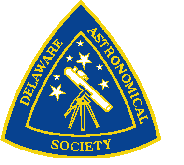

|
Don Shedrick |
Feb, 2001 |
February DAS Focus
COMPUTERS IN ASTRONOMY by Don Shedrick
This month I have some new web sites I have discovered that should be helpful for your observing sessions.
The Castle Point Astronomy Club from Rayleigh, Essex, UK has a terrific Java application, "The Planets," on their web site at:
http://www.cpac.freeserve.co.uk/
Since this is a Java program, you can run it from their web site without downloading it; however they also have it available for download so you can run it without being connected on line. This program is one of the easiest to use I have seen for displaying planetary events such as Jupiterís moons and shadow transits, Great Red Spot positions, rings of Saturn, Saturn's 8 visible moons, and many more solar system events. In addition, smooth animation of all events is available.
For the Lunar observers, there are two web sites with detailed Lunar photos of the entire Lunar surface. The "Lunar Orbiter Photographic Atlas of the Moon" by Bowker and Hughes (NASA SP-206) is considered the definitive reference manual to the global photographic coverage of the Moon with the complete set of 675 plates. The images contained within the atlas were obtained at low to moderate Sun angles and have been enhanced to display the best photo quality possible. Locating photos of your area of interest is easy with the multiple search capabilities, which include searching by location and feature name. This can be found at:
http://www.lpi.usra.edu/research/lunar_orbiter/
The "Consolidated Lunar Atlas" by Gerald P. Kuiper, Ewen A. Whitaker, Robert G. Strom, John W. Fountain, and Stephen M. Larson is a collection of the best photographic images of the moon taken with large earth based telescopes in the mid sixties. It was published by the Lunar and Planetary Laboratory, University of Arizona, in 1967. The digitized and edited images by Eric J. Douglass are on the web at:
http://www.lpi.usra.edu/research/cla/menu.html
The collection includes images of the entire surface of the moon visible from earth, with multiple images of each section over a large range of sun angles for interpretation of Lunar surface structures. Access to a photo of the desired area is made easy by thumbnail images arranged over the disk of the moon.
If you would like to see what some southern astronomers are up to, check out Alabama amateur Rod Molliseís "Skywatch," a nice little newsletter he publishes on the web containing a variety of articles on observing, equipment, and software. It can be downloaded as a pdf file at:
http://members.aol.com/RMOLLISE/index8.html
For the cool web site of the month, I selected the web site by British amateur Roy Clarke. He has a web site called The Salopian Web with a variety of info including a guide to the current month's night sky, astronomical events, lunar phases, a description of the visibility of the major planets, detailed star charts; a sky diary, news and events, eclipse details, a glossary and satellite data plus a huge list of links and software downloads. One of the nicest features of his site is his "Guide to The Constellations of the Night Sky" giving a complete list and details of all 88 Constellations as defined by the International Astronomical Union with Star Names, important features, and the mythology behind the names. It can be found at: